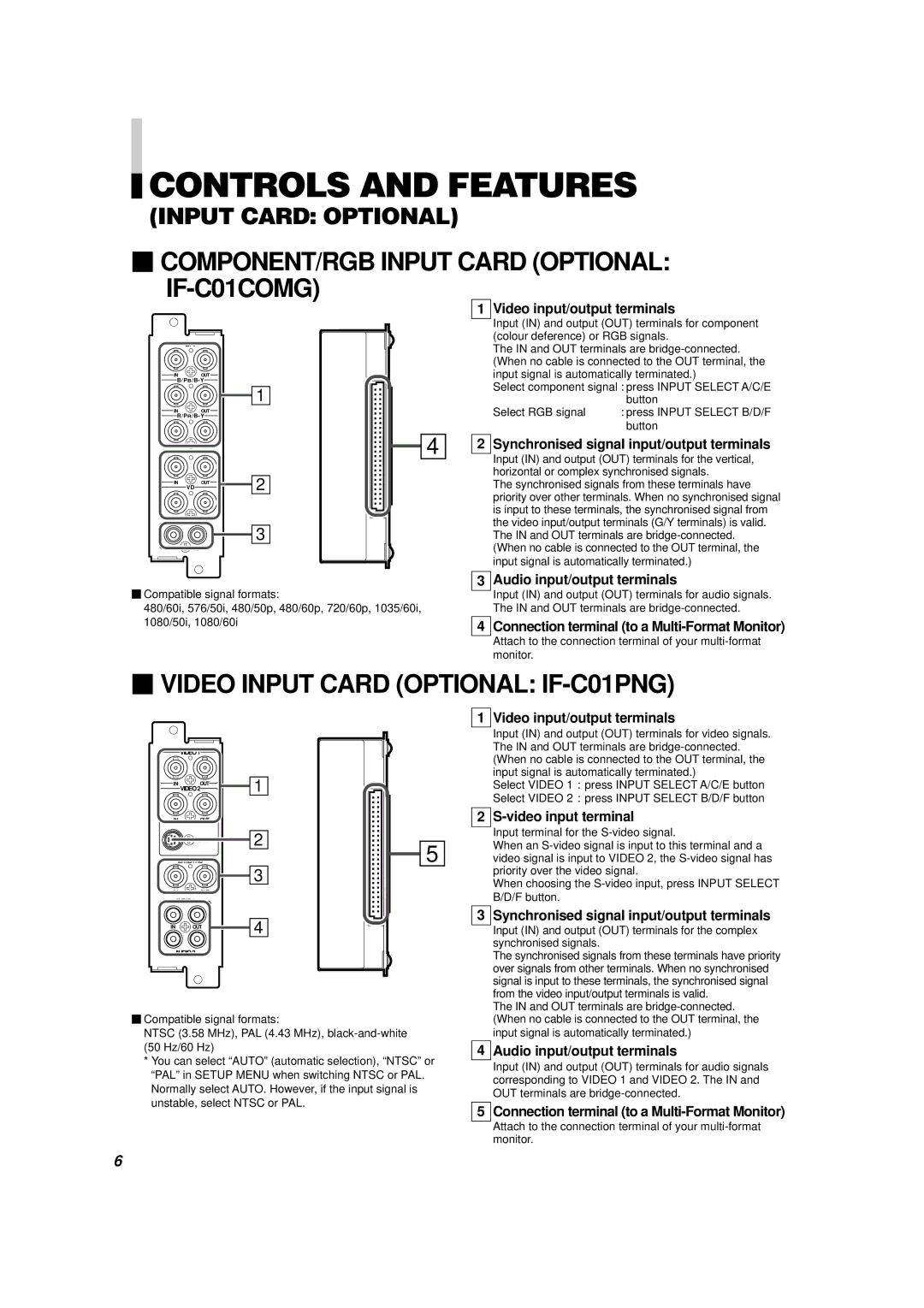V1700CG specifications
The JVC V1700CG is a versatile camcorder designed for both amateur and professional videographers, offering a blend of advanced technology and user-friendly features. It is built to deliver high-quality video capture, boasting a range of specifications that set it apart in the competitive market of digital camcorders.One of the key features of the JVC V1700CG is its impressive 1/3-inch progressive scan CMOS sensor, which allows for high-resolution video recording at up to 1080p. This sensor is designed to deliver clear and detailed images even in low-light conditions, making it an ideal choice for various shooting scenarios. The camcorder also supports a wide dynamic range, ensuring that bright highlights and deep shadows are captured with clarity.
The V1700CG is equipped with a powerful 20x optical zoom lens, which provides versatility for capturing distant subjects without sacrificing image quality. The lens features advanced optical stabilization technology that minimizes camera shake, ensuring smooth and steady footage, even when shooting handheld or while in motion. This feature is particularly beneficial in dynamic shooting environments, where stability is crucial.
In addition to its optical capabilities, the JVC V1700CG includes several digital enhancements, such as automatic face detection and scene modes, which optimize settings based on the environment and subject. This makes it easier for users to achieve professional-looking results without extensive technical knowledge. The camcorder also features a built-in microphone that captures clear audio, along with the option to connect external microphones for enhanced sound quality.
Connectivity options on the JVC V1700CG are also noteworthy, with HDMI and USB outputs that facilitate easy sharing and editing of video content. The camcorder supports various storage formats, including SD, SDHC, and SDXC cards, allowing for ample recording space and flexibility.
Moreover, the ergonomic design of the V1700CG makes it user-friendly, with an intuitive interface and a rotating LCD display that enables easy framing and monitoring of shots from different angles. Overall, the JVC V1700CG stands out as a reliable and feature-rich camcorder, perfect for those looking to elevate their video production capabilities. Whether for personal projects or professional use, this camcorder delivers exceptional performance and quality.

